Beyond Technique: Trauma Healing, Mediation and Spirituality (Wu wei or 無為)
 In this post, I speak about the nature of moments of deep resolution in trauma healing, spirituality and mediation by drawing on:
In this post, I speak about the nature of moments of deep resolution in trauma healing, spirituality and mediation by drawing on:
- Peter Levine’s work on healing trauma (Somatic Experiencing®),
- Daniel Stern’s work on now moments and the process of change in healing relationships,
- my own work on the psychology of mediation, impasse and the IDR cycle in mediation,
- the Theory of Holes, a theory about the relationship between psychology and spirituality (A. H. Almaas and Faisal Muqaddam),
- the work of J.G. Bennett, a teacher of the Fourth Way; and
- the possibility of true mastery arising out of our “being with” what is happening, that is, the mastery of nondoing known as wu wei (Chinese: 無為).
As I discuss below, I believe there is often a tension between “technique” and our spontaneity and our simple human presence during deep moments of resolution.
The ability to hold this tension is, I believe, what constitutes mastery of a craft or a profession. Ultimately, it is that ability which can lead to real mastery, the mastery of nondoing or wu wei (Chinese: 無為)
It is also, I believe, the core of spiritual practice.
A Trauma Healing with Peter Levine
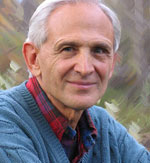
In a recent training on healing trauma that I was privileged to attend, Peter Levine, Ph.D. did a session with a woman with severe PTSD.
This woman had experienced abandonment, neglect and physical deprivations of many kinds. Yet she was an extraordinary, proud and creative person. She responded to the work with Peter in a glorious and powerful way.
I found myself crying. Many in the audience were also crying, and, by the end, Peter Levine himself was crying. I will call her Gloria.
The Path Beyond Technique in Trauma Healing
Much of the session consisted of Peter’s guiding Gloria through the workmanlike execution of Somatic Experiencing® techniques for healing trauma including:
- Pendulation — Shifting bodily awareness back and forth between regions of ease and discomfort in the body in order to modulate discomforting or traumatic sensations.1
- Titration — Encouraging clients to deal only with very small manageable areas of discomfort or trauma at any one time. A part of pendulation, this helps avoid retraumatization.2
- Supportive, appropriate physical contact — Providing his arm as a place for Gloria to push against the resistance to feeling that had come to characterize so much of her life, as a part of
- Retoring active responses — Encouraging the recovery of the active self-protective reflexes that are overwhelmed during trauma.3

But Peter also made a point of saying that the most crucial thing was to stay and be in one’s humanity with the client, another human being. And this was demonstrated by the way he worked with Gloria.
For example, at one point, Gloria mentioned that she enjoyed singing a certain spiritual. In response, Peter asked her to sing it then, now.
Technically, this could be described as “resourcing” — encouraging the client to connect with images or sensations which are positive or soothing, not traumatic.4
But it was more than that. As she sang in her soulful and dignified way, her humanity, not her trauma, filled the room.
The Work of Daniel Stern: Moment-by-Moment Analyses of How People Change
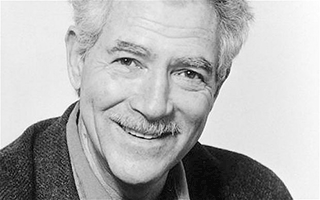
During the training, Peter mentioned the work of Daniel Stern several times. The two had given a training workshop together in Switzerland some years ago.
Stern is probably best known for his pioneering work filming and analyzing the moment-by-moment interactons of mothers and infants. More recently, Stern, sometimes working with the Boston Change Process Study Group, has analyzed moment-to-moment interactions in other contexts, including therapy.
Stern has argued that his approach is also applicable to negotiation. As I have argued in my work on the psychology of mediation, I believe it is applicable to mediation as well.
I Grasp Your Hand in Mind: The Present Moment as a Human Moment in Therapy

Daniel Stern sees therapy as an intersubjective process which unfolds through a series of “present moments.” By examining the parties’ interactions on a moment-to-moment basis, Stern develops insights about the experience of therapy, not just its verbal content.
For example, consider this scenario:
A therapist had a practice of shaking hands with patients at the end of their sessions. One day, after a very deep session, as a patient was leaving, the therapist held the patient’s outstretched hand in both of his own hands, instead of his usual handshake. They looked at each for several seconds.
Stern notes:
- This handshake was a turning point in their relationship. Yet it never had to be discussed. It entered their implicit knowledge about their relationship.
- This moment was the culmination of many preceding moments. But it emerged spontaneously, and was not planned or predictable. As Stern said, “[life] changes in leaps.”
- Each of them sensed the experience of the other. A new state of intersubjectivity was created.
I would add that during this special handshake, as in Gloria’s session, there was a recognition of the human, not just the technical or professional dimension of their relationship.
The Now Moment as a Call to Move Beyond Technique
According to Stern, during certain highly charged moments, which he calls now moments,5 the parties bump up against the usual parameters of their relationship. A crisis is created. The parties are pulled forcefully into the present, now. Examples of these now moments include:
- A patient doing therapy on the couch suddenly sits up and forcefully demands a face-to-face encounter with the therapist;
- A therapist goes to the movies and finds herself on line just behind a patient; or
- A party in a lengthy, high-conflict, must-settle mediation receives the news that her supposedly final offer has been rejected (my example).
Stern emphasizes that during now moments “something beyond a neutral, technical response,” is demanded of the practitioner.6 And precisely for that reason, the practitioner “feels disarmed and the level of anxiety rises because he or she really does not know what to do.” 7
According to Stern, during these now moments, if the practitioner plays it too safe, and insists on hiding behind technical moves, the threat may be disarmed, but the opportunity for real progress evaporates.
Moments of Meeting: Moments of Deep Resolution
According to Stern, a now moment demands instead a real “moment of meeting” — a moment of true intersubjective contact. Examples include:
- A sincere, special handshake for a vulnerable client after a challenging session described above;
- A therapist responds with a gentle “hello” when confronted with the patient’s demand for eye contact.
- The trainees observing Gloria’s session burst into applause after her song, dispensing with the usual custom of maintaining silence;
During these moments of meeting, Stern emphasizes that the practitioner must not only react in a nontechnical way, but one which is exactly “fitted” to the present moment of the situation.
Moments of Meeting During Mediation Impasse
In my experience, moments of meeting occur frequently during the mediation of civil disputes, especially during impasse. This is because parties in these mediations typically go through a psychological cycle which I have called the IDR cycle — this is a cycle of ego-inflation (overconfidence), ego-deflation, and, finally, realistic resolution. 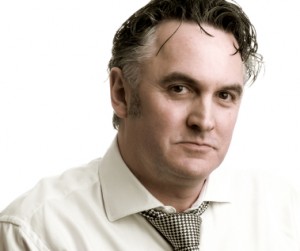
Impasse occurs after deflation has entered the picture — when each party discovers that their hope for easy resolution on their own terms will not be realized.
Impasse, then, is a tender time. What Almaas and Muqaddam have called a “hole” opens up — a sense of deficiency, often accompanied by self-judgment — as the parties realize they will never reach their desired goals. This may manifest outwardly as disappointment, or anger, or refusal to budge.
Ideally, this “hole” is filled in exactly the way Daniel Stern describes — by a moment of real contact with the mediator (or with the other side of the dispute), a moment in which the reality of the situation is faced. As I have said in my work for the legal and psychotherapeutic communities, while discussing impasse:
This “moment of meeting” happens in mediation when the mediator’s sincere belief that the dispute may indeed not settle is conveyed to the parties. This reinforces for them that now is the time of personal responsibility; they must indeed decide whether or not to bring the matter to resolution.
Ideally, then, it is through this moment of meeting that the parties become able to hear the message: “unfortunately, this will not settle entirely on your terms, you will have to decide or compromise.” If so, they may become more able to make the choices and compromises necessary to move on.
The Psychology of Mediation: Impasse and the Mediator’s Ego
Yet, as Stern describes, and I have spoken about as well, there may be a price to pay on our side.
We may have to confront our own holes, our own uncertainty and our own humanity once it becomes evident the dispute may not settle despite all our hard work. If we do, we may then be able to spontaneously come forth with what is really needed — what Stern calls a “fitted response,” a specific, attuned nontechnical — deeply human — response.
During mediation impasse, as I mentioned above, this may simply mean that we sincerely and respectfully acknowledge the dispute will not settle without significant movement by the parties. If, with our help, they can then disengage from their ego investment in the outcome, then, hopefully, they will be able to face this difficult truth and move on to realistic resolution.
A Doorway to True Mastery
Ultimately, it seems, our techniques are designed to fail us at times, perhaps because authentic human contact is needed or the conflicts we confront are simply intractable. During these times, if we are able to let go of our professional ego ideal as the “expert,” something deeper may emerge, something closer to who we really are, to our human being.
We may then find that sincerity and humility can accomplish what mere technical skill could not. Something we say or do — often something quite simple — turns out to be just what was needed to break through a barrier or provide much needed relief. Resolution finally arrives, perhaps seemingly on its own.
Stated another way, what Daniel Stern calls “something beyond a neutral, technical response” can happen naturally if we remain anchored in ourselves and with the actual relationship unfolding with clients. Particularly if we are are anchored in our bodies, the resonance8 can become quite palpable. Often, this is actually what can cause a shift.
But — and this is important — even when things are difficult, or seem hopeless, we must also stay within role. This is the tension we must hold.
We can have two contradictory states in us — a state of “I must” and a state of “I cannot.” If we lose one of these, then some compromise arises. We either do what we can, or do something different and pretend it is what we must do. But if we don’t compromise, then this can bring us to that moment when something else emerges that is neither affirming that we must, nor denying that we can. It is just the action. The action appears.9
Ironically, this doing through skillful not-doing, what the Chinese call wu-wei,10 appears to others as a form of mastery. And indeed that is exactly what it is.
Bibliography
Elizabeth E. Bader (2010) The Psychology of Mediation: Issues of Self and Identity and the IDR Cycle, 10 Pepperdine Dispute Resolution Law Journal 183.
Elizabeth Bader (2010) The Psychology of Mediation (II): The IDR Cycle, A New Model For Understanding Mediation. (on mediate.com; here is an illustrated version.)
Elizabeth Bader (2010) “The Psychology of Mediation, Part I: The Mediator’s Issues of Self and Identity.” (on mediate.com and here.)
Elizabeth E. Bader (2011) Self, Identity and the IDR Cycle: Understanding the Deeper Meaning of ‘Face’ in Mediation, International Journal of Applied Psychoanalytic Studies, Wiley Online Library.
Elizabeth Bader (2013) Recovering Essence on the Spiritual Journey (Almaas, Muqaddam and the Theory of Holes). https://www.elizabethbader.com/elizabethbadersblog/recovering-essence-spiritual-journey-almaas/
J. G. Bennett (1989) Sacred Influences. Chapter 3, “Doing,” New Mexico: Bennett Books.
Diane Poole Heller, Ph.D. with Laurence S. Heller, Ph.D. (2001) Crash Course: A Self-Healing Guide to Auto Accident Trauma & Recovery. North Atlantic Books: Berkeley.
Peter A. Levine with Ann Frederick (1997). Waking the Tiger: Healing trauma: The Innate Capacity to Transform Overwhelming Experiences. North Atlantic Books: Berkeley.
Peter A. Levine, Ph.D. (2010) In an Unspoken Voice: How the Body Releases Trauma and Restores Goodness. North Atlantic Books: Berkeley.
Daniel J. Siegel, M.D. (2012) The Developing Mind: How Relatioships and the Brain Interact to Shape Who We Are (Second Edition). Guilford Press:New York.
Edward Slingerland (2003) Effortless Action, Wu-Wei as Conceptual Metaphor and Spiritual Ideal in Early China. Oxford University Press: New York.
Edward Slingerland (2014) Trying Not to Try: The Art and Science of Spontaneity. Crown Publishers: New York.
Daniel N. Stern, M.D. (2004). The Present Moment in Psychotherapy and Everyday Life. W. W. Norton: New York.
Daniel N. Stern, M.D. (2004a). The present moment as a critical moment. Negotiation Journal, 20, 365-372.
Gratitude
- See, e.g., Peter Levine, 2010, p. 79. ↩
- Peter Levine, 2010, p. 82, Diane Poole Heller with Laurence S. Heller, p. xx. ↩
- Peter Levine, 2010, pp. 83-86. ↩
- Diane Poole Heller with Laurence S. Heller, p. 63. ↩
- Daniel Stern, 2004, p. 167. For a glossary of the terms used by Stern, see the Appendix to this post. ↩
- Daniel Stern, 2004, p. 168, my italics and punctuation. ↩
- Id. ↩
- “Emotionally attuned and contingent communication between two individuals creates interpersonal resonance: each member of the dyad is influenced by the other. Within the brain, . . . distinct neural circuits become involved in a resonating state.” Daniel Siegel, 2012, p. 362. ↩
- J. G. Bennett, 1989, p. 21. ↩
- Cf. Edward Slingerland, 2003, 2014. ↩

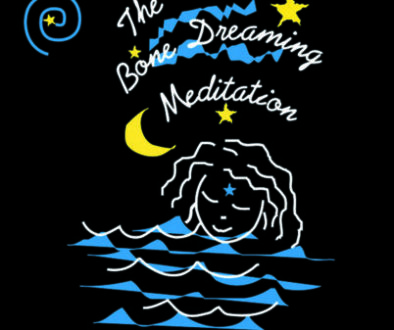
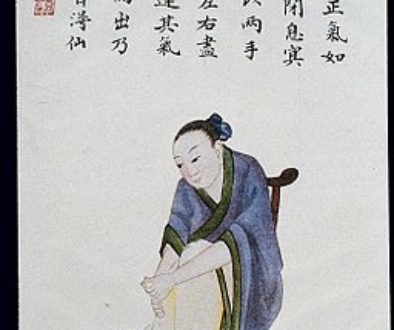
October 24, 2018 @ 12:06 am
I believe that the main task of the therapist is partly to help the patient to recall ECOSORS: Emotional, COgnitive and SOmatic Reconstructions which have been decisive for how the patients own self-regulating growth possibilities have been disturbed and entered the vegetative system as an unsolved contradiction, thereafter to be congruently present in the patient’s emotional condition, a co-wanderer in the landscape which the patient must seek to be able to construct or rather recreate his history.
The idea of “being in harmony with the patient”. This holds good on all levels – cognitive, emotional, physiological and somatic. To be in harmony with the patient is a treatment of resistance at the same time as it is an acceptance of the resistance. Resistance can hardly become useful for the therapy if it is not dialectically regarded as a resource as well as an explanation and a measure of the individual’s ability to learn, and how comprehensive and thorough this learning has been.
It is about merging the bodily, emotional and cognitive experience in such a way that the patient experiences / recognizes the conflict / opposites as an organic whole and that they are solved as an organic whole (cf. Newer Research, Two Memory Systems, Damasio). The unconscious emotional experience, the trauma, is made conscious, integrated.
May 20, 2014 @ 9:05 pm
I have enjoyed reading your blog. Congrats on building a body of written commentary on SE, which inspires so many of us.
July 27, 2014 @ 12:31 pm
Thank you so much Vera! I have been enjoying learning about your work also, as others may by going to http://www.veragassnermft.com/
Thanks again!
Elizabeth
May 16, 2014 @ 4:41 pm
Great article, Elizabeth. Thank you for your clear synthesis.
July 27, 2014 @ 12:33 pm
Thank you so much Cheryl, fellow (or sister) traveler that you are. I am sure people will enjoy your sites also, which they can find at
http://www.cherylconnerconsulting.com and http://www.multiversemusic.org
Best to you,
Elizabeth